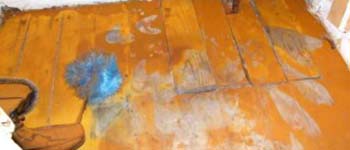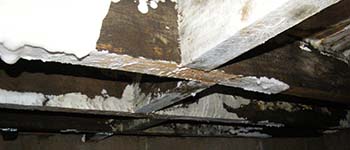Fungal decay can affect buildings of all ages and if decay is discovered it should be identified and remedial action taken without delay. Fungal decay occurs in timber which becomes wet/damp for a long time resulting of the attack by one of a number of wood-destroying fungi.
The most well known ones being referred to as Dry rot – Serpula lacrymans. Wet rot or Cellar fungus- Coniophora puteana / Mine fungus Poria vaillantii. There are many others but these are less common and are normally confused with one of the above.

Dry rot
Dry rot is considered the most serious form of fungal decay to affect a building. It can spread behind over and through masonry to infect and destroy larger sections of timber, within a building, resulting in costly damage.

Wet Rot
Dry rot is considered the most serious form of fungal decay to affect a building. It can spread behind over and through masonry to infect and destroy larger sections of timber, within a building, resulting in costly damage.
Fungal decay only occurs in the wood with a moisture content of 20%+ Finding the source of dampness and eliminating the ingress of moisture and promoting drying is most important and always necessary.
Outbreaks of fungal decay always start in a similar way, the mature fruiting bodies of wood destroying fungi that develop during an attack and produce millions of microscopic spores and these are widely dispersed by air currents. Where they fall on untreated damp wood these will germinate by pushing out a hollow tube called hypha into the damp timber which grows and branches to develop a mass of threads called mycelium.
The mycelium develops inside the timber and breaks down the wood for food, the wood may darken in colour and develop a Characteristic cracked appearance, some wet rots may result in bleaching of the wood (White rots) eventually, the wood loses its strength and in some situations may become dangerously unsafe.
The main differences between dry rot and wet rot are the degree of development of mycelium on the wood surface and the ability of the fungus to spread into other timbers via adjacent masonry. It is important that the two types of decay be correctly identified since they need different treatment.
Building and Property Wet Rot & Dry Rot Treatment services in Oldham, Manchester, Rochdale, Stockport & Cheshire.


